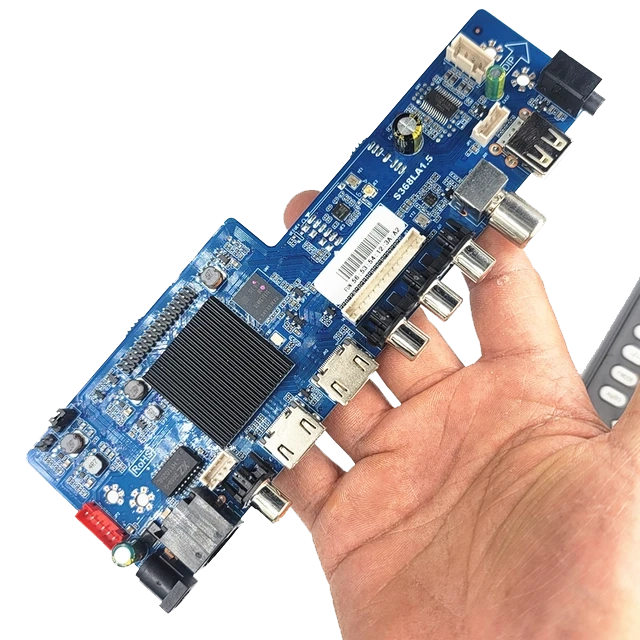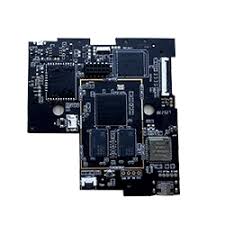
Set forth on the sphere of mobile app programming for compact board computers. This thorough guide will equip you with the basic principles and operational guidelines to effectively program your own Android-supported SBC implementations. From understanding the fundamental concepts of Android software engineering to traversing detailed world of SBC systems, this guide will facilitate your a successful Android SBC development experience.
- Dive into the assorted of available SBC environments and their separate powers.
- Hone skills in essential Android building apparatus, including Android Studio, SDKs, and emulators.
- Absorb the intricacies of customizing your SBC setup for seamless Android behavior.
Investigate best practices for designing robust and efficient Android products tailored for SBC hardware constraints.
Building Apps for SBCs Using Android
Employing efficiency of a Single Board Computer (SBC) for Android application programming is an increasingly common approach. These compact and versatile tools provide a cost-effective solution for trial, enabling engineers to tap into the capabilities of Android without the need for a traditional desktop. By making use of the SBC's resources such as its processor, memory, and connectivity options, developers can build Android applications that range from simple utilities to more complex packages. The capability to customize the hardware and software environment further strengthens the flexibility of SBCs for Android development, making them a indispensable tool for both professionals.
Harnessing Android Development Boards for IoT
For budding programmers delving into the world of Internet of Things (IoT), Android dev boards present a robust platform to bring their innovative ideas to life. These affordable boards, often equipped with sophisticated hardware and engaging software development kits (SDKs), provide a solid foundation for building a wide range of IoT systems. From home supervision systems to scientific monitoring devices, Android dev boards empower companies to design cutting-edge IoT projects with ease.
- Utilizing the extensive Android ecosystem, developers can utilize a vast library of libraries specifically designed for IoT services. This supply of resources allows for improved development and promotes the creation of innovative IoT solutions.
- What's more, Android dev boards often feature onboard connectivity options such as Wi-Fi, Bluetooth, and cellular, facilitating seamless connectivity with other devices and cloud platforms. This connectivity capability is critical for enabling real-time data transmission and remote control of IoT systems.
- As a final point, the community-driven models of Android dev boards fosters a thriving ecosystem of developers, providing ample aid for tackling any challenges encountered during the development process.
Assessing Android SBCs for Audio-Visual Projects
The field of multimedia applications is constantly expanding, pushing the boundaries of what's practicable. In this dynamic landscape, Android System-on-Chips (SBCs) have emerged as a forceful option for developers seeking to generate innovative and engaging experiences.
These compact yet equipped SBCs supply a unique blend of processing performance, connectivity, and multimedia features that make them advantageous for a broad array of applications.
Regarding high-definition video playback to immediate audio processing, Android SBCs are equipped to handle the expectations of today's multimedia arena.
- Additionally, their open-source nature supports developers to customize hardware and software to address specific application prerequisites.
- Such level of elasticity allows for developers to break the limits of multimedia innovation.
Go Beyond Defaults with Android Dev Boards
A development board like the Raspberry Pi or one Nexus Player provides a unique opportunity to configure your Android experience. By experimenting with the underlying software, you can tailor everything from the UI to targeted software. This level of governance allows enthusiasts to push boundaries and design truly personalized Android configurations. Whether you're wanting to improve your device's performance, research new capabilities, or simply fulfill your curiosity, a dev board can unlock a world of prospects.
- Acquire knowledge of the fundamentals of Android development
- Craft custom ROMs and kernels
- Assess new apps and features
- Attach your device to peripheral components
Resolving Android Errors on SBCs
When working with Android development on Single Board Computers (SBCs), you might encounter a variety of challenges. These can range from simple configuration errors to complex software bugs. Effective debugging and troubleshooting are crucial for identifying the root cause of these problems and restoring your Android environment to full functionality. Employ the vast resources available online, such as forums and documentation, to gain insights into common issues faced by other developers in similar setups.
Start by carefully reviewing your system logs for any error messages or warnings that might provide clues about the problem. Establish a solid logging strategy within your Android application to capture relevant information during runtime. This can help pinpoint specific areas where errors are occurring. Don't hesitate to experiment different configurations and settings to see how they affect the behavior of your system.
- Spend time in understanding the hardware capabilities of your SBC, as limitations in processing power or memory can contribute to Android performance issues.
- Forge a strong understanding of the Android SDK and its kits to effectively debug your applications.
- Stay updated with the latest launches of both Android and your SBC's firmware, as these often include bug fixes and performance improvements.
Improving Android SBC Speed
When operating Android-based compact computing modules , Single-Board Computers, maximizing output is paramount. To achieve this, developers and engineers can leverage a variety of procedures. This involves carefully adjusting software and hardware components to safeguard seamless functionality. Key areas for upgrade include system resource management, power consumption, network connectivity, and application efficiency.
- Centering on real-time processing is vital for applications that demand immediate outputs.
- Applying lightweight structures can substantially reduce memory usage, thereby boosting overall capability.
Regularly improving the Android operating system and platforms is crucial for addressing security vulnerabilities and gaining efficiency optimizations.
Maintaining Security Standards on Android SBCs
Securing your Android equipment against threats is paramount. Implementing sound security best practices for your Android System-on-a-Chip (SBC) setup can significantly mitigate risks. Regularly maintain your SBC's software to address weaknesses. Configure robust access management to moderate user permissions and network communication. Conduct scheduled security inspections to identify potential issues and execute necessary countermeasures.
- Inform your users about common security threats and best practices for protecting their devices.
- Secure sensitive data at rest and in transit using strong mechanisms.
By adhering to these best practices, you can create a more secure environment for your Android SBC.
Harnessing Next-Generation Android SBC Solutions
The world of embedded Systems (SBCs) provides a compelling platform for developing revolutionary Android applications. By blending the power of Android with the unique capabilities of SBCs, developers can create sophisticated solutions across diverse areas. This approach offers exceptional flexibility and customization options, advancing the development of tailored applications that cater to specific parameters. Whether it's for manufacturing control, SBCs coupled with Android development open up a myriad range of possibilities.
- Employing the low-power nature of SBCs for resource-constrained environments.
- Producing Android applications with instantaneous responsiveness for time-sensitive tasks.
- Blending Android's user interface capabilities with custom hardware peripherals for a unified experience.
The combination of Android and SBCs empowers developers to push the scope of innovation, producing transformative applications that reshape various fields.
Shaping Android's Evolution with SBCs
The field of Android development is rapidly evolving, with Single Board Computers (SBCs) emerging as a prominent force. These compact and versatile machines offer developers a powerful platform for experimentation, prototyping, and even full-scale application deployment. With their affordability, expandability, and thriving ecosystems, SBCs are poised to refashion the way we craft Android applications. Engineers are passionately embracing this modern paradigm, unlocking a world of possibilities for creating compelling user experiences.
From embedded frameworks to integrated devices, SBCs provide the perfect groundwork for a wide range of Android projects. Harnessing the power of open-source software and hardware, developers can create innovative solutions that address real-world challenges.
Exploring Projects with Android SBCs
Android Single Board Computers (SBCs) are robust little gadgets that can be used to develop a wide range of applications. Whether you're a newcomer, there are plenty of entertaining project ideas to explore. One accepted category is domestic tech, where you can use an Android SBC to regulate your devices. You could also develop a custom media center, deliver content on a larger screen, or even investigate robotics and automation.
- A few sbc for android Numerous Multiple A few
- Numerous other ideas include prototyping educational games, modeling wearable gear, or even working on open-source systems. The possibilities are truly extensive.
